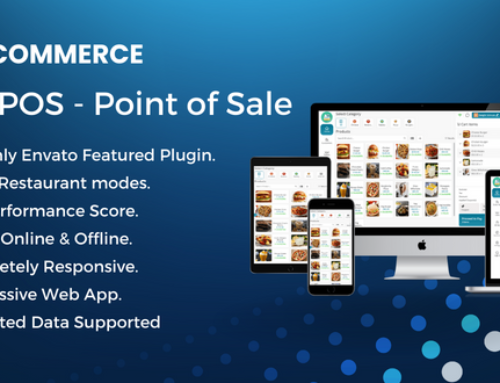Hospital Management System
The most comprehensive and versatile hospital or medical facility management system is the hospital management system. It works with admin, patients, physicians, nurses, lab technicians, pharmacists, receptionists, and auditors to automate all paperwork and manual labor.
Characteristics
Numerous automated features: In order to increase efficiency and streamline hospital administration, the system has hundreds of automation features.
8 various user account types: Eight different kinds of user accounts are provided by the system, enabling individualized access and permissions.
The easiest method for scheduling appointments: Both patients and doctors can easily schedule appointments through the system.
Doctors’ private communications: In order to improve privacy and convenience, the system enables confidential communication between patients and physicians.
A most straightforward way to handle hospital facilities: An easy-to-use system is included in the system for handling hospital accommodations like rooms and beds.
Supervision of medications: The system enables the monitoring of medications, as well as the administration of inventories and prescriptions.
Blood donation records: The system keeps track of blood donors, making it simple to monitor and manage blood supplies.
Records of diagnoses and reports: The system has diagnostic and report records, making it simple to manage and retrieve patient data.
Payroll administration: For hospital staff, the system has payroll management tools.
Accounting that is user-friendly: To manage hospital funds, the system has user-friendly accounting features.
Management of the patient: The system includes tools for handling patient information, such as medical histories, test outcomes, and treatment plans.
Ability to schedule doctor’s appointments: The method makes it simple for patients to seek doctor appointments online, doing away with the need for phone calls or in-person scheduling.
Keep track of the prescriptions and medications that people take: The system has tools for managing and tracking patient prescriptions and medications, making it simple to access information and maintain records.
Monitor patient payments: The system has tools for handling patient payments, such as balances, invoices, and payment history tracking.
Look at all diagnostics: The system gives access to all diagnostic information about a patient, such as test results and reports, making it easy to look up information and handle patients.
Control operational reports: The management of operation reports, including the planning and monitoring of operations and other processes, is made possible by the system.
Confidential communication between physician and patient:
The system has features that allow for discreet communication between physicians and patients, facilitating safe and practical communication.
Manage doctors:
The system enables the administration of medical professionals, including their profiles, schedules, and specialties.
Searchable doctor’s directory with complete profiles:
The system has a searchable catalog of doctors with complete profiles, details about their specialties, and contact information.
Classify physicians based on departments:
The method makes it possible to group doctors into different departments, making it simpler for patients to locate medical professionals with the right training.
Hospital administration:
Features for handling hospital operations, such as patient admissions, discharges, and transfers, are included in the system.
Control the blood bank:
The system has functions that manage the blood bank, such as keeping accounts of donations, inventory, and blood types.
Maintain a list of blood donors:
The system enables the administration and tracking of blood donors, including their contact details, blood type, and history of donations.
Allotment of bedrooms and cabins:
The system enables the administration of patient cabins and beds, including scheduling, tracking, and allocation.
Keep track of your medications:
The system has tools for controlling and monitoring the use of hospital medications, as well as their inventory.
Reports can be saved:
The system enables the administration and storage of hospital reports, including operational and patient reports.
Creating payslips for medical employees:
The program has tools for creating payslips for hospital employees that monitor salaries, deductions, and benefits.
Deal with the tedious paperwork: By automating a variety of processes, such as scheduling appointments, information about patient management, and the generation of prescription and diagnostic reports, the system lessens the need for paper-based paperwork.
Adding receptionists who can schedule appointments: Receptionists can be added to the system to handle booking appointments and patient data.
To help with the management of medicines, add pharmacists: The system enables pharmacists to be added and handle the administration of medication to patients.
Nurses should be added to protect patient information: With the help of the system, nurses can be added to handle patient data and give care.
Creation of diagnostic results automatically: By automating the production of diagnostic reports, the system saves time by lowering the demand for human report creation.
Automated prescription creation: By automating the creation of prescriptions, the system decreases the need for manual prescription creation while increasing accuracy.
The easiest method of billing: For handling patient payments, the system includes an intuitive billing system with payment tracking, billing history, and options.
Create a webpage of your own using your content: With your own content, you can quickly build a website for your hospital. This makes it easier for potential patients to discover you online and helps you establish your online presence.
Ability to set up emergency contacts, as well as opening and ending hours: You can set up emergency contacts on the system, and patients can quickly reach them in an emergency. In order to make it simpler for patients to know when they can visit you, you can also set up your opening and ending hours.
Control the services you offer: It is simple for you to regulate the services you offer, which makes it simple for patients to discover the details they require about the remedies and services you provide.
Patients’ capacity to make online appointment requests: Through your website, patients can quickly make an appointment, saving their time and effort.
Simple but useful blog: The blog function can be used to inform patients about your hospital, your treatments, and other pertinent information. By doing this, you can build your credibility as an expert in your area and inform your patients.
Present the world your hospital: Your hospital can be made known to the entire world and have a wider audience by having a website. This will assist you in attracting patients from other cities or even nations.









